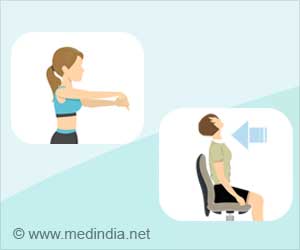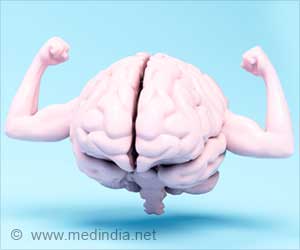Ever wondered why the famous words, ‘I Love you’ warm the cockles of your heart? Can love, which has tickled the creative juices of artists, poets and writers to produce masterpieces, be born merely out of instinct? Can we pin this life-altering emotion to a play of chemicals and hormones in the body? Discover what makes for the inextricable bonding of love and life!
Love - an intense, universal and immensely intriguing emotion that knows no barriers of time, geography, race, sex and culture, is a famous expression of profound affection, caring and attachment. Eulogized as life’s driving force and clichéd as ‘making the world go round’ or ‘doing strange things to people’, it is famously known to blind those it envelops!This mind boggling emotion is versatile too as it fits in different contexts – As much as ‘love’ can imply fondness for an object, it can also be used to express profound feelings in a relationship. One can also love his fellow beings, or passionately love a cause!
Manifestations of Love
Unraveling this emotion led to detailed analysis of its varied forms - love can be romantic, platonic, interpersonal and even impersonal.
To offer a peek, the love between lovers is romantic love, spurred on by physical attraction. Love which is devoid of romantic or sexual overtones, for instance love between friends is considered a platonic form of love. Bonding between family members or the deep attachment between mother and child is interpersonal love. Impersonal love denotes love for a cause or a principle, close to one’s heart. One can love a hobby, their job, or love material objects and attach great value to it.
Why we love .....
The hunger for love is much more difficult to remove than the hunger for bread. ~ Mother Teresa....
The need to be loved is as basic and indispensable as any other human need, like hunger, thirst, warmth and sleep, say analysts.
Renowned anthropologist, Dr Helen Fisher whose pet subject ‘love’ led to extensive research on the evolution of love, has called it a ‘natural phenomenon’. A famous author of many books on ‘Love’, Dr Fisher explains the emotion to be extensions of lust, attraction and attachment, which influences our preferences of a mate and drive for sex.
In one such interesting work of hers, titled ‘Why we Love’, she delves into the tell tale signs of someone in a romantic relationship. Her insight reveals the journey of romantic love and lust. According to her, romantic love begins with physical attraction while lust is a powerful sexual desire which is fleeting and lasts anywhere between a few weeks to months. On the other hand, attachment denotes a sense of commitment in the relationship, born out of intense love and affection.
Neurobiology of Love
People in love could experience mood swings, sleeplessness, racing heart beat, loss of appetite and are generally lost in their own world. So much so one can easily spot love’s countenance. Now, Neuroscience makes sense of this ‘heady’ state of love....
When two people fall madly in love, the brain’s pleasure centers are activated causing the release of few chemicals-dopamine, pheromones and serotonin. These chemicals are directly responsible for excitement, increased heart rate, lack of appetite and sleeplessness.
New love is more ‘physical’, according to neuroscientists who studied the brain scans of those in love. As the relationship progressed, the regions in the brain associated with long term commitment, attachment and love, began to witness activity marking the beginning of lifetime bonds.
Scientists also found evidence that love is a fundamental need, akin to hunger, thirst and sleep. The regions in the brain activated during hunger and thirst were similar to the pattern of brain activity found among those in love. Need we search more to know why love and life are inextricably linked?
The Hormone of Love – Oxytocin
Oxytocin, now dubbed as the ‘hormone of love’, or the ‘cuddle hormone’ is a chemical produced by the hypothalamus in the brain and released by the pituitary gland, in response to certain environmental triggers such as stimulation of the cervix during sex, skin to skin contact, during childbirth or even during nipple stimulation in lactating women. The testes of men and ovaries of women also produce this hormone.
Oxytocin is directly responsible for ‘pair bonding’ - the bonding between mothers and infants, or between males and females.
Oxytocin also plays a crucial role in the sexual response cycle. During sex, the mere act of touching or caressing, causes a spike in the oxytocin levels in the body. Rightly called as a catalyst in sex, it ensures the body is both psychologically and physically aroused. Oxytocin triggers penile erections. Oxytocin is also released during orgasm in both men and women.
The release of oxytocin during sexual intercourse forges bonding between sexual partners. Further, having sex with the same partner repeatedly causes the release of oxytocin in abundance, sometimes by mere sight of the partner. Oxytocin inspires attachment and influences our choice of partner over other prospects. Easily, the love hormone lays the foundation of lifetime bonds.
Oxytocin Shapes Maternal behavior
Oxytocin’s role is mission critical during childbirth. During labor, a woman’s body is flushed with oxytocin. This triggers contraction of the uterine walls and prepares the body for childbirth. Post delivery, Oxytocin plays a role in milk letdown in lactating mothers.
Perhaps the best from oxytocin is its role in defining maternal behavior. Research has linked the origin of maternal behavior to this love hormone.
To verify the role of oxytocin in the establishment of initial bond between the mother and the new born, experiments were conducted on female rats to check the outcome of inhibiting the release of oxytocin. Those female rats, in which oxytocin release was inhibited, began to desert their newborns. On the contrary, when virgin female rats were given oxytocin shots, they began to portray maternal behavior towards offsprings of other rats, caring for them like their own.
Those who thought ‘Love’ is beyond the realm of science and reason might need to rethink. It is clear, the ‘out of the world experience’, Love, is not beyond the human brain. Rightly, falling in love is just a matter of chemistry!
Source-Medindia
SAVITHA/L










